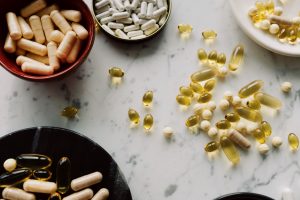PRP Checked! Part 1: Life as a PRP in Hospital in East Malaysia

One year has gone by since I’ve started my PRP-ship, time really flies as I reflected back on my journey full of laughter, sweats, tears, blood (from paper cuts haha), panda eyebags , sleepless nights; all the hustle to ensure successful completion of our PRP to get the ever-valuable and glorified “paper” called FRP certificate.

First things first, what’s PRP and what do I have to do?
Provisionally Registered Pharmacist a.k.a PRP is the equivalent of Houseman Doctor in the pharmacy world. According to the Pharmacists Registration Act 1951, pharmacy graduates need to undergo one year of training as PRP to obtain the Fully Registered Pharmacist (FRP) license to practice as a registered pharmacist in Malaysia. Serving as FRP after PRP completion will depend on the contract signed, for example in the Ministry of Health, it would be one year of compulsory service. The training needs to be conducted in Pharmacy Board-approved premises which could be government hospitals and clinics, private hospital, community pharmacy, pharmaceutical industry or academia R&D in university. As a PRP, there are listed departments, tasks and logbook quotas that need to be met, an overview of how each PRP setting differs are explored further in our “How To PRP” series.
My experience as a PRP in State Hospital
I completed my PRP-ship in Hospital Queen Elizabeth 1, Sabah, the biggest hospital in the state. My PRP started in the In-patient and Out-patient Pharmacy Departments for the first three months. Initially it was a struggle with a very steep learning curve, trying to pick up the workflow, common drugs and doses in addition to counselling validation. It can be quite exhausting to work during the day and continue studying at night, trying to cram the basic knowledge in the tiny brain of mine and answering questions from preceptors and senior pharmacists. Overwhelming, but it sorta gets better throughout the training year. There are definitely ups and downs, feeling appreciated and recognised when a patient deeply thank you for helping her to understand her medications and when a doctor thanks you for preventing medication error. Like a see-saw, the down days can be demotivating when you are criticized for not knowing something simple or when a patient argues with you at the counter. Throughout the year, as I was rotated in the Ward, Manufacturing, Store, Drug Information Service, Therapeutic Drug Monitoring, I’ve learnt how pharmacists play important roles in each department. Each department depends on each other to ensure continuity supply and safety of medicines. When we talk about pharmacy, the first few things that pop up in your mind might be these; pharmacists dispensing medicines at the outpatient pharmacy department or pharmacists following ward rounds giving drug recommendations. But in reality, a lot of works are being done behind the scenes, for example, ensuring sufficient drugs are procured by the Store Department, KPK applications for off-label and unregistered drugs by the Drug Information Service Department, producing quality products that are unavailable commercially in the Manufacturing Department and interpreting and giving recommendations based on drug therapeutics level by the Therapeutic Drug Monitoring Department, All these different departmental rotations made me realize pharmacists are doing much backstage to directly and indirectly support the clinicians so that in the end, the patient gets the best therapeutic care. I’m forever grateful for all the learning experiences and guidance that were given by the pharmacists here, thank you for shaping and brushing me up to be a competent pharmacist.

PRP during the COVID-19 Pandemic
Ahh.. COVID-19 and the new normal of life. Well, how does the pandemic affect me? Almost everything is different. Firstly, my PRP intake was delayed beyond our expected intake schedule, so the wait was dreadful. The working culture and environment have changed too, from regular sanitising hands and surfaces, long hours of wearing face masks and face shields and occasional swabs for COVID-19 tests and quarantines. There are definitely some new and missed learning opportunities as my hospital mainly treats COVID-19 patients. Number of regular patients has gone down as they are referred to nearby facilities for treatment continuity. Hence, our services mainly cater to In-patient COVID-19 patients and value-added services (VAS) for outpatients.
Why did I choose East Malaysia?
Yup, it is my first choice to do PRP outside of the famous Klang Valley even though it’s my hometown. Personally, I wanted to experience something different and unique – it is just who I am. So, I chose East Malaysia and the hospital choice was a result of spinning roulette. Did I regret my choice? So far, nope. It has been an eye-opening experience to learn the people’s culture, language, environment, so boleh-bah. Also people here do not live on trees, for the ones I’ve encountered so far. I can’t wait to explore further and experience what else out there.
My good ol’ tips for new PRPs
Don’t want to sound like an old grandma here, but my takeaway; always keep learning. Always keep asking why and take the initiatives to self-learn and learn from your preceptor and senior pharmacists. Learn both clinical knowledge and some of the technical administrative skills that pharmacists need to know and do in their everyday jobs. A good overall attitude too will also make or break your whole PRP journey. Nothing is impossible, one year of PRP will zoom by fast, so take the opportunity and make the best out of it no matter which facility you are in.

The opinions expressed in the article are the writers’ own and do not reflect the view of MPS YPC.













